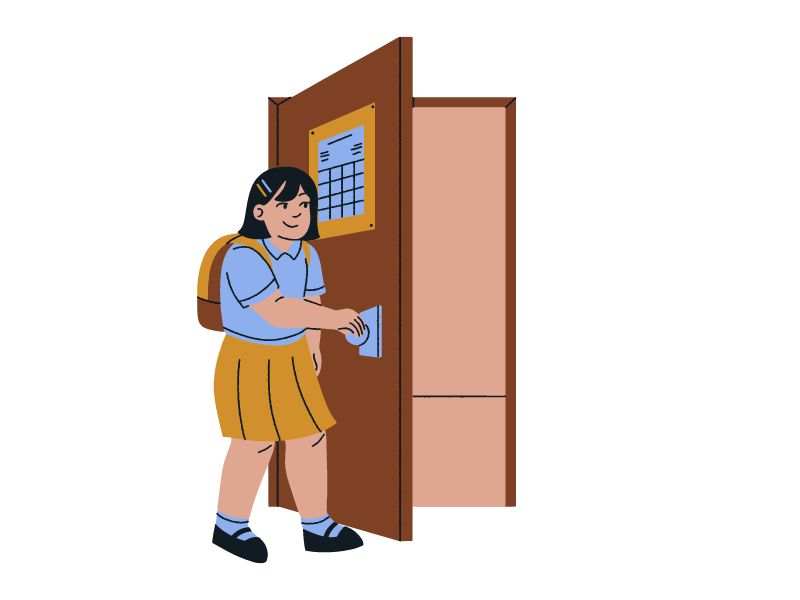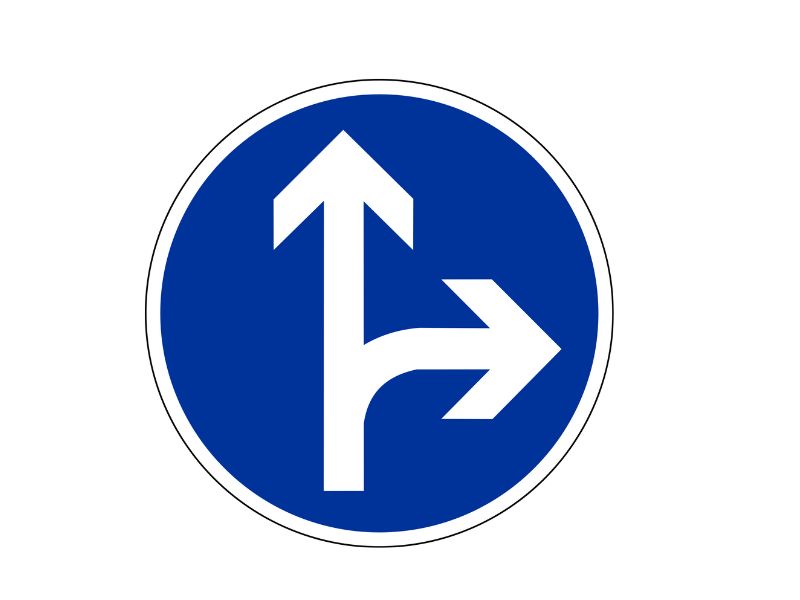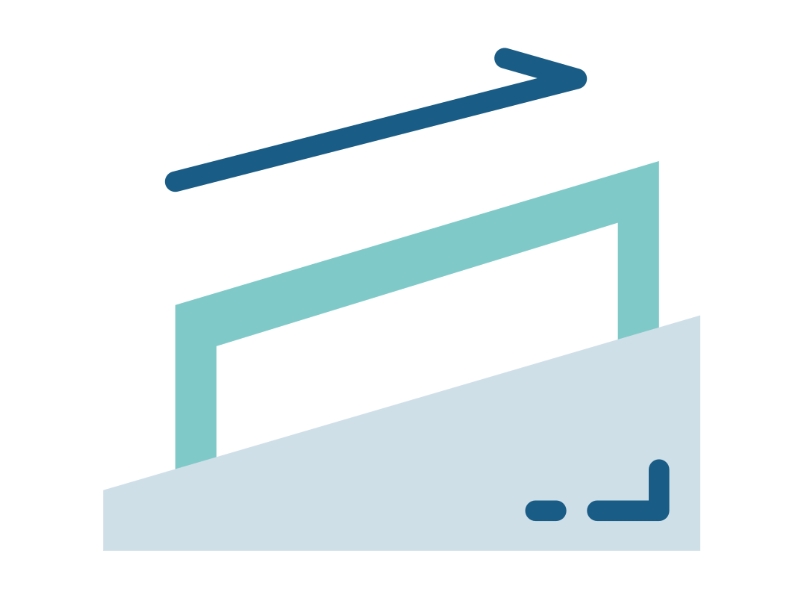In the scope of geometry, angles are fundamental elements that dictate the relationships between lines and shapes. Among these, supplementary angles hold a significant place. They represent a unique connection, presenting a pairing that adds up to a perfectly straight line. In this write-up, we will explore what supplementary angles mean, delve into their properties and types, and reveal their presence in the world around us through a collection of intriguing real-life examples.
What do we mean by supplementary angles?
The concept of supplementary angles is very interesting as it helps us comprehend the interplay between angles and the broader geometric framework. Supplementary angles basically refer to a pair of angles that, when combined, form a straight line measuring precisely 180 degrees.
To give you a simple instance, if there are two angles, one measuring 100 degrees and the other measuring 80 degrees, the two angles can be called a pair of supplementary angles because the sum of both these angles equals 180 degrees. An interesting point here to take note of is that, for any two angles to be supplementary, they don’t need to be side by side and share an arm and a vertex. Even if two angles do not share anything in common and are isolated from each other, they are still called supplementary angles because they add up to 180 degrees.
Properties and types of supplementary angles
Supplementary angles have some unique properties that differentiate them from complementary angles, a pair of angles whose sum equals 90 degrees. Let’s have a look at them.
- The most important property of supplementary angles is that their sum is always 180 degrees.
- The angles in a pair of supplementary angles are not necessarily close to each other, but they do make a straight line if they are clubbed together.
- Supplementary angles form a linear pair, unlike complementary angles, which do not create a linear pair of angles.
- Supplementary angles can be formed by combining an exterior angle (outside a shape) with an interior angle (inside a shape).
As we have pointed out before, supplementary angles need not touch each other to be called supplementary. Hence, depending on the location of the angle, supplementary angles are divided into two types:
- Adjacent supplementary angles
- Non-adjacent supplementary angles
Two angles having a common vertex and sharing an arm are known as adjacent supplementary angles because they are positioned closely and touch each other. On the other hand, two angles that do not share anything in common and are separate entities are referred to as non-adjacent supplementary angles.
Finding supplementary angles in the world around us: A few real-life examples
1. A Star

Draw a star, and you will notice that the lines forming the star make certain angles with each other. When you observe two adjacent angles of a star in combination, you will find that these angles are actually supplementary because they form a straight line.
2. A Partially-Opened Door

Leave your room’s door half open and take a look from afar. Did you notice what we’ve been talking about? The partially-opened door forms two angles, with the door serving as a common arm. The angle formed between the door and the wall, when combined with the angle on the other side, creates a straight line; therefore, the two angles can be called supplementary angles.
3. A Streetlight

Roads often have an array of streetlights to curb nighttime darkness. These streetlights and other utility poles in urban and rural environments form supplementary angles with the ground, demonstrating how man-made structures and their surroundings become real-life examples of geometry.
4. A Tree Branch

Nature has surrounded us with trees, and each tree forms several supplementary angles. Need to know how? When a tree branch extends outwards, the angles it forms with the trunk can be paired together, and these angles form a straight line on the trunk. As a tree has several branches extending out of the main trunk, we have multiple supplementary angles on it.
5. Logos

Many logos and symbols incorporate lines and angles. Take a close look at the logo of FedEx, and you’ll discover that supplementary angles are subtly embedded where the d and E meet each other, adding balance and harmony to the design. Similarly, you can find many other logos with designs forming supplementary angles. You just need to pay attention to the logos in your surroundings to find more.
6. A Ladder and a Wall

If you spot a ladder leaning against a wall, take note of the angles formed at the points of contact. They will undoubtedly be supplementary. When you keep a ladder against the wall, two points of contact appear. One is where the ladder meets the wall, and the other is where the ladder meets the floor. If you look closely, you will see two sets of supplementary angles forming, one at each point of contact.
7. A Coffee Mug

A coffee mug is another real-life example that represents a supplementary angle. Observe the angle formed where the mug meets its handle. You will notice how the handle forms two adjacent angles with the mug to create a straight line.
8. A T Junction

A T junction is where one road meets the other at a 90-degree angle. At this junction, one road comes to an end and merges with the other one. Traffic usually moves either left or right at the point where the road ends. At a T-junction on the road, where one street intersects another, the angles formed by the two roads are right angles and supplementary as they combine to create a straight line.
9. A Wheelchair Ramp

Wheelchair ramps are constructed near walkways, business places, shopping centers, etc. so that people using them can move around easily and access the world around them. The slope of a wheelchair ramp creates angles between the ramp and the ground, forming supplementary angles which form a straight line with the ground enabling smooth and accessible navigation.
10. Pages of a Book

Next time you flip a page while reading a book, observe the angles formed between the page and the open book. You’ll see that the angle formed between the page and the base of the book pairs well with the angle on the opposite side of the page, ultimately showcasing how supplementary angles form with each page turn while you enjoy a seamless reading experience.
11. Standing Position

When you stand on the floor, your body is at 90 degrees to the ground. This means you form two right angles while standing in this position. These two angles, which form on either side of your body, are supplementary in nature because, when combined, they will create a straight line on the ground. Similarly, when you stand with your arms extended outwards, the angles formed between your arms and your body will also be supplementary.
12. An Open Laptop

An open laptop is yet another example of how supplementary angles appear in real life. To understand what we are talking about, unfold the screen of your laptop and place it on the table. See how it forms two angles with the base? These two angles are supplementary, with the top of the laptop serving as a common arm.
Final words
Understanding the concept of supplementary angles expands our perspective of the world around us. From things appearing in nature to everyday objects, these examples illustrate the prevalence of angles in our daily lives. Therefore, it is essential that students learn this geometrical concept, and some ways to ease the learning process are to use activities, manipulatives, anchor charts, and real-world examples.
By recognizing the hidden relationships formed by supplementary angles, we can appreciate the inherent harmony and balance present in both natural and man-made items. So, let us continue exploring and discovering the fascinating display of angles in the world we inhabit.

I am Priyanka Sonkushre, a writer and blogger. I am the person behind “One Loving Mama,” a mom blog. Equipped with a Bachelor’s degree along with an MBA, my healthcare background helps me deeply understand learning difficulties. I know how challenging it can be for parents to find the right resources to help their children excel in life. So, here I am to blend my healthcare expertise with my parenting experience to create valuable and helpful resources for parents and teachers supporting children with learning differences. If you wish, you can follow me on Facebook and LinkedIn.

